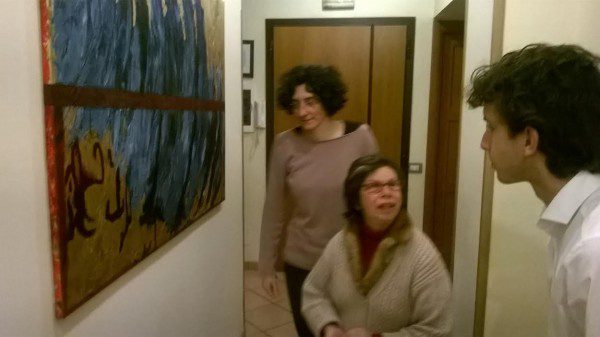by Zeger Polhuijs
This Easter, I celebrated Holy Week with the Community of Sant’Egidio in Rome. During the Easter vigil, the basilica of Santa Maria in Trastevere was packed. As the crowd joyfully sang, the procession entered the church, with priests and acolytes carrying a number of large icons as well as a procession cross and a Bible.
The liturgy was celebrated with much solemn attention to detail, and ended with exuberant clapping and singing. In addition, a message was shared by founder Andrea Riccardi: the message that Easter carries a sense of urgency — urgency, because we are expected in Galilee. What does Galilee, what do the peripheries look like in our societies? Has the Church itself not a marginal subsociety in Western Europe, a Galilee out of which nothing good can come (John 1:46)?
In the Netherlands, as in Rome, the re-opening of the Moses and Aaron church in Amsterdam has been understood as a sign of new hope, and perhaps a turning of the tide of secularization — the closing of churches, and the painful reorganization of parishes.
It may very well be a sign of hope for the remaining faithful, but it seems unlikely that it will turn the tide. The parish, the priesthood, and the religious life are going through a serious crisis the end of which is not nearly to be seen. In addition, a sudden increase of conversions is sociologically unlikely, according to British sociologist Steve Bruce. What are Catholic communities, be they parishes or ecclesial lay movements, to do in such an environment? What does hope look like in such a sociological reality?
A turning of the tide in terms of numbers of affiliation or attendance might be sociologically unlikely, and the Church might indeed become severely marginalized (although sociologists have proven to be dramatically wrong before in their analyses and predictions about religion and modernity). However, a turning of the tide in terms of successfully engaging with society is, I think, a very real possibility, and a movement toward which the Community of Sant’Egidio might be able to contribute significantly, in response to some of the challenges of our time
In this light, numbers and conversions are insufficient measures of success. The ability to bring hope, even while being a small and marginalized community, might turn out to be a sociolical reality. Though difficult to operationalize, it can prove to be a concept which severly challenges established sociological perspectives.
What hope did I find in the sociological reality of the periphery? During a visit to the house of the ‘amici’, the mentally handicapped friends of the Community, I was surprised by the rich spiritual life and social awareness of its residents. Some of these people, after having been in extremely undignified conditions elsewhere as they existed on the margins of our success-oriented and fast-paced societies, had really come to life again in the friendly environment of this house.
Their paintings –– which can be seen throughout the house but also in various exhibitions in Rome –– are amazing works of art as well as testimonies to their profound social awareness and inner life. One painting testified to an informed and empathic insight into the Community’s HIV/AIDS projects in Africa. Another painting expressed the theme of ‘spiritual crisis’ with a powerful, abstract use of colour.
As the resident who painted the latter explained to me its meaning, in terms of hope, crisis and seperation, I could not help but think that she was describing the spiritual condition of the Netherlands. I shared this with her and asked her how she thinks hope can be found. Referring to the Moses and Aaronchurch in Amsterdam, she said with a sudden burst of joy that she had found hope in the Community, that all the churches should be re-opened, and that with Jesus and the Community, everything is possible!
Now again, this is not sociologically likely. But I strongly felt that her painting was prophetic, and her exclamation as well, prophetic in the sense of announcing Gods intentions that are still unseen.
The sociological questions of the state of parish communities in Western Europe — and the meaning of the rise of the lay movements and their implications for the life of the faithful in the local Church — remain difficult. But theologically speaking, I think hope will play a crucial role in the near future of Europe, and it can be found in the periphery.
When we are willing to go to the periphery and listen to the poor, we might yet be surprised by prophecy.
 Zeger Polhuijs is a Dutch student and Catholic blogger, and involved with the Community of Sant’Egidio in Amsterdam. Over the next months he will conduct fieldwork in the Sant’Egidio Communities in Rome, Antwerp and Amsterdam for his thesis research.
Zeger Polhuijs is a Dutch student and Catholic blogger, and involved with the Community of Sant’Egidio in Amsterdam. Over the next months he will conduct fieldwork in the Sant’Egidio Communities in Rome, Antwerp and Amsterdam for his thesis research.














